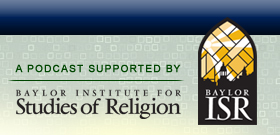

|
Matthew Derrick on the Geography of the Umma  Date: March 4th, 2013
 Is the Islamic notion of “the umma” — i.e., the general community of Muslims — consistent with the modern concept of the nation-state and territorial sovereignty? We discuss this issue with Prof. Matthew Derrick, an assistant professor of geography at Humboldt State University, and author of “Containing the Umma?: Islam and the Territorial Question” that recently appeared in the Interdisciplinary Journal of Research on Religion (see link below). Reacting to scholars such as Berenard Lewis, Samuel Huntington, and other scholars associated with the “cultural turn in geography,” Prof. Derrick argues that territory remains an important defining concept in how people organize their life even among religious believers who belong to a transnational faith. Our discussion starts out with a short detour to Tatarstan where Matthew has conducted extensive fieldwork and he lays out what is unusual about that area within Russia. He also corrects Tony on his misunderstanding of tartar sauce. We then move on to a definition of “the umma,” an essential theological concept within Islam that represents the community of all believers. This raises the question of whether a transnational faith can be squared with the territorial state that dominates our world system. Matthew takes us on a tour of the issue of territorialism and how it evolved, with the Peace of Westphalia marking an important milestone in how we conceive of nation states in the modern world. Tony presses Matthew on his more ideational notion of statehood that revolves around issues of sovereignty (e.g., cuius regio eius religio) as composed to a more political economic approach to defining territory based upon the ability to tax a population. This discussion takes us askance of the religious question for awhile, but it is very important in understanding how modern scholars view the compatability or incompatability of Islam with modern territorial states. Matthew reviews the thinking of Samuel Huntington and Bernard Lewis who do not see Islam as being compatible with our modern state system and then shares his critiques of these two scholars bringing us to a discussion of how European imperialism carved borders into the Islamic world. We investigate the rise of pan-Arabism and pan-Islamism, including the attempts by thinkers such as Jamal ad-Din al-Afghani and Sayyid Qutb to craft a general Islamic identity. Examples of how these attempts have fared are examined including work by the Muslim Brotherhood, the Pashtun movement within Pakistan, the nationalism that seems apparent in the Arab Spring and how Iran has supported Armenia in its conflict with Azerbaijan. We close by revisiting the area of Tatarstan that has appeared to be able to manage well its regional territory within Russia despite its ethnic and religious pluralism. Recorded: January 25, 2013. RELATED LINKS Matthew Derrick at Humboldt State University’s Geography Department. “Containing the Umma? Islam and the Territorial Question,” by Matthew Derrick in the Interndisciplinary Journal of Research on Religion (free with registation). RELATED PODCASTS Nathan Brown on the Muslim Brotherhood. William Inboden on Religious Liberty, Foreign Policy, and the Arab Spring. Monica Toft on Religion, Terrorism, and Civil War. Daniel Philpott on Religious Resurgence and Democracy.
3 Responses to “Matthew Derrick on the Geography of the Umma” |
 Search The Podcast
To search the podcast, type a term and click the Search button.
  Browse Podcast Categories
Select a category below to browse the podcast:
   |















[…] Matthew Derrick on the Geography of the Umma. […]
[…] Matthew Derrick on the Geography of the Umma. […]
[…] Matthew Derrick on the Geography of the Umma. […]